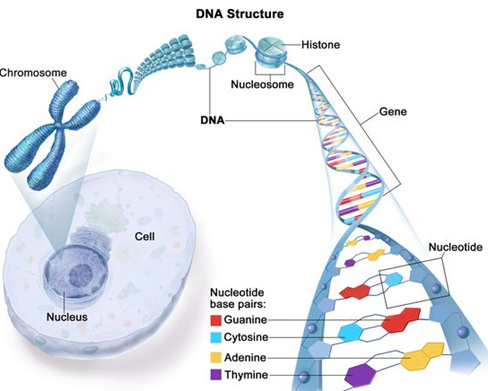

Context
Recently, the Union government has withdrawn the DNA Technology (Use and Application) Regulation Bill, 2019, from the Lok Sabha.
Background
- First proposed in 2003, the Bill has gone through numerous changes, led by both the Department of Biotechnology and the Law Ministry.
- In 2019, it was referred to the Parliamentary Standing Committee after being introduced in the Lok Sabha.
- Two years later, the panel’s report was released, in which it highlighted that the Bill could be misusedto target segments of society based on religion, caste or political views.
Key points of the Bill:
- The Bill seeks to create a regulatory framework for obtaining, storing and testing DNA samples of human beings, mainly for the purposes of criminal investigations, and with the objective of establishing the identity of a person.
|
DNA testing is already being used for a variety of purposes, such as criminal investigations, establishment of parentage, and search for missing people. |
- The proposed law seeks to bring in a supervisory structure to oversee these practices, and frame guidelines and rules so that the DNA technology is not misused.
- The Bill proposes to set up two institutional structures:
- A DNA regulatory board and
- A DNA data bank — at the national level.
- Regional centres of the board as well as the data bank can be set up at the state level too.
- Laboratories: The Bill proposes that testing of DNA samples can be carried out only at laboratories that are authorised to do so by the regulatory board.
Need of such a legislations:
- Increasing demands: A growing number of complainants are asking for DNA tests. Such demands are growing by around 20% annually.
- Although the 3,000-odd DNA tests performed yearly by Indian laboratories are insignificant in comparison to the 70 other nations that rely on DNA Technology, the spike in demand contradicts worries about privacy and probable data abuse.
- Gray area: DNA tests fall into a gray area in the pursuit of justice, bridging the gap between the 'eminent need' to uncover the truth, whether it be in the form of evidence in a criminal case, a claim of marital infidelity, or proving paternity and the risks of slipping into self-incrimination and encroachment on individual privacy.
- Concerned privacy rights: This brings attention to the expanding use of technology for improving the process of justice but it also violates people's privacy
|
As part of the right to life under Article 21, the Supreme Court acknowledged that bodily autonomy and privacy are part of fundamental right. |
What are the objections against the Bill?
- The main debate over the proposed law has been around three issues;
- Whether DNA technology is fool proof
- Whether the provisions adequately address the possibility of abuse of DNA information
- Whether the privacy of the individual is protected
- DNA contains much personal information: DNA information can be extremely revelatory. It can not only establish a person’s identity but also reveal a lot about physical and biological attributes of the person like eye, hair or skin colour, susceptibility to diseases, possible medical history, and possible clues to biological relatives.
- Against Individual Privacy: For years, critics of the Bill have been claiming that collecting and storing such intrusive information could lead to abuse, besides being violative of a person’s privacy.
What is DNA Profiling?
- The DNA profiling method was first developed in 1985, specifically for forensic use.
- Every individual has a unique DNA blueprint, making it a reliable means of identification and establishment of biological relationships between individuals.
- This can be done by analysing hair, blood or semen samples.
- DNA fingerprinting is a laboratory technique used to determine the probable identity of a person based on the nucleotide sequences of certain regions of human DNA that are unique to individuals.
|
Deoxyribonucleic acid (DNA)
|
DNA testing and related Judgments:
- Banarsi Dass case, 2005: In the Banarsi Dass case, 2005,SC held that DNA test must balance the interests of the parties. DNA tests DNA tests should also not be ordered if there was other material evidence at hand to prove the case.
- Bhabani Prasad Jena, 2010: Precedents set by the Supreme Courtthrough the years show that judges cannot order genetic tests as a “roving enquiry” (Bhabani Prasad Jena, 2010).
- S. The Puttaswamy case, 2017: The ruling of the Constitution Bench in the K.S. The Puttaswamy case (2017) affirming that the right to privacyis part of the rights to life (Article 21) has only strengthened the privacy argument.
- In a case involving a woman, the Supreme Court recently ruled that forcing someone to submit to a DNA testagainst their will would violate their right to personal liberty and privacy.
- Ashok Kumar judgment 2021: Before ordering a genetic test, courts should consider the "proportionality of the legitimate aims,"the court stated in its Ashok Kumar judgment 2021.



